Welcome to Chapter 6 of The Ultimate T-shirt Business Success Guide.
The print-on-demand (POD) revolution has opened up t-shirt selling to more entrepreneurs than ever before. But with low barriers to entry comes fierce competition. Successful t-shirt designers understand what resonates visually and emotionally with their target audience.
Whether you plan to sell online, in stores, or wholesale, appealing to your niche is critical. Tastes differ greatly across groups, so there’s no one-size-fits-all design approach. However, some core artistic and business principles apply for creating compelling t-shirts tailored to your customers.
This chapter shares practical strategies for designing t-shirts that sell in today's discerning marketplace. We'll decode the formula for winning designs that connect with your ideal customer.
Table of Contents
- The T-Shirt Design Landscape
- Creating Appealing & Marketable T-Shirts
- Designing for Your Target Market
- Navigating Copyright Issues
- Common Mistakes in T-Shirt Design
- Bonus T-Shirt Design Tips
- Conclusion: Crafting T-shirt Sales Success
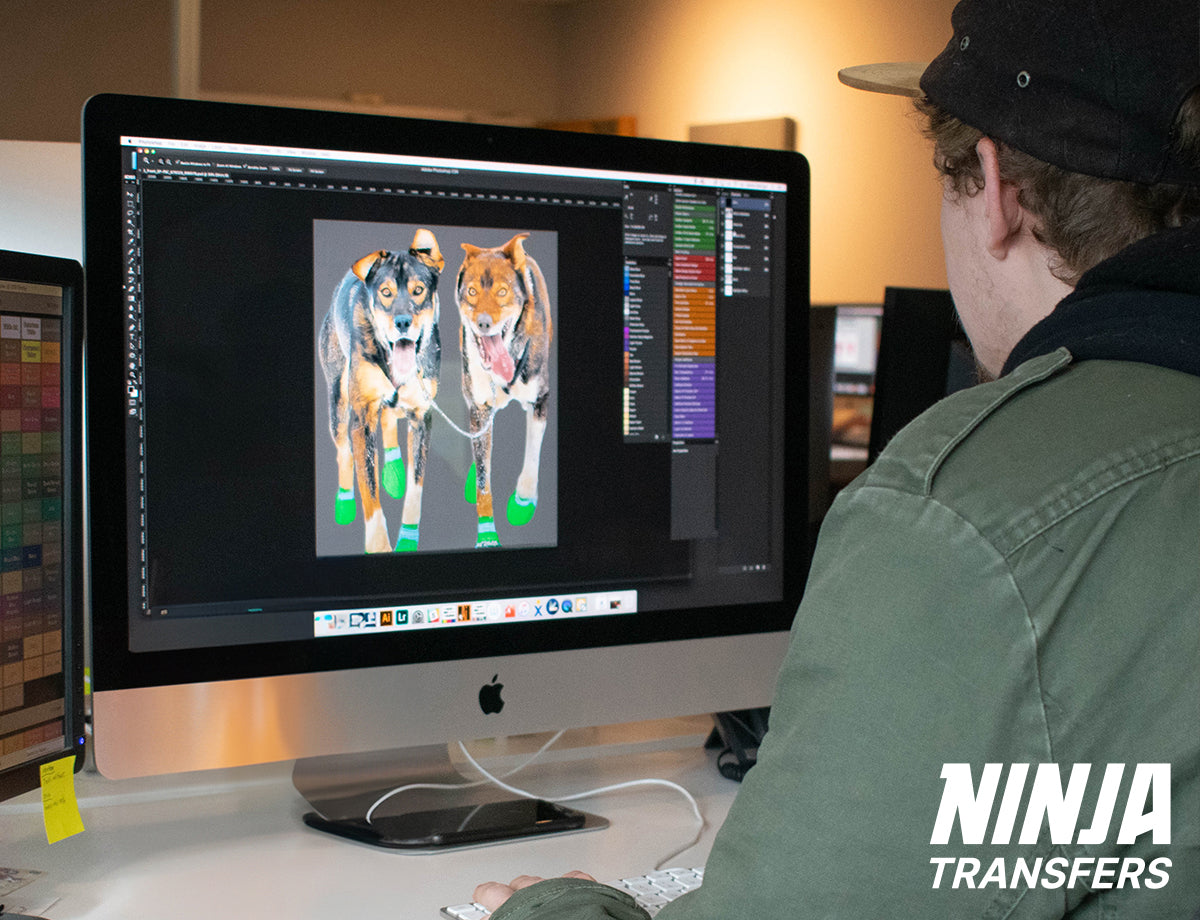
The T-Shirt Design Landscape
Print-on-demand (POD) technology has transformed the t-shirt design world, providing more design and sales options compared to traditional pre-printing. Here is a quick comparison of the approaches and what they mean for creating designs that sell.
Pre-printed: This more traditional model requires careful market research and conservative designs based on proven demand. Bulk print runs are made based on sales projections to minimize overstock risk. The focus is playing it safe, ensuring interest in a design before printing.
POD: Offers the freedom to creatively experiment since designs can be tweaked based on market trends without leftover inventory concerns. POD platforms enable A/B testing to identify top-performing designs. This flexibility makes POD popular for startups.
Hybrid DIY POD: This approach combines POD’s creative freedom with the economic benefits of pre-printed bulk runs. Direct-to-Film (DTF) transfers allow small businesses to produce their own prints, testing customer preferences while maintaining higher profits. The hybrid route balances design exploration and cost control.

We look deeper at these business models in Chapter 2: Making a T-shirt Business Plan.
Creating Appealing & Marketable T-Shirts That Sell
Creativity has no bounds when designing t-shirts, but following certain principles can boost visual appeal and marketability. These guidelines identify key ingredients for creating coveted designs, even around niche themes.
While not rigid rules, understanding buyer motivation separates bestselling t-shirts from the rest. We break down the elements that make customers emotionally compelled to not just admire but purchase a design. Let's uncover the top factors for t-shirt appeal.
Choose Subjects That Resonate
A t-shirt’s theme sparks engagement by spotlighting your target demographic’s values and passions. Feature graphics and captions that celebrate the ideals your niche identifies with. This emotional resonance transforms the apparel into a symbol of identity rather than just merchandise.
For example, a design for pet lovers could feature an endearing cartoon animal that affectionately captures the quirks of being a pet parent. Echoing audience ideals in this thoughtful way fosters an immediate bond. Essentially, reflect what makes your niche tick via subjects and humor that light them up. Understand the cultural touchstones, inside jokes, and delightful oddities of your customer base and design t-shirts that give them a knowing nod.
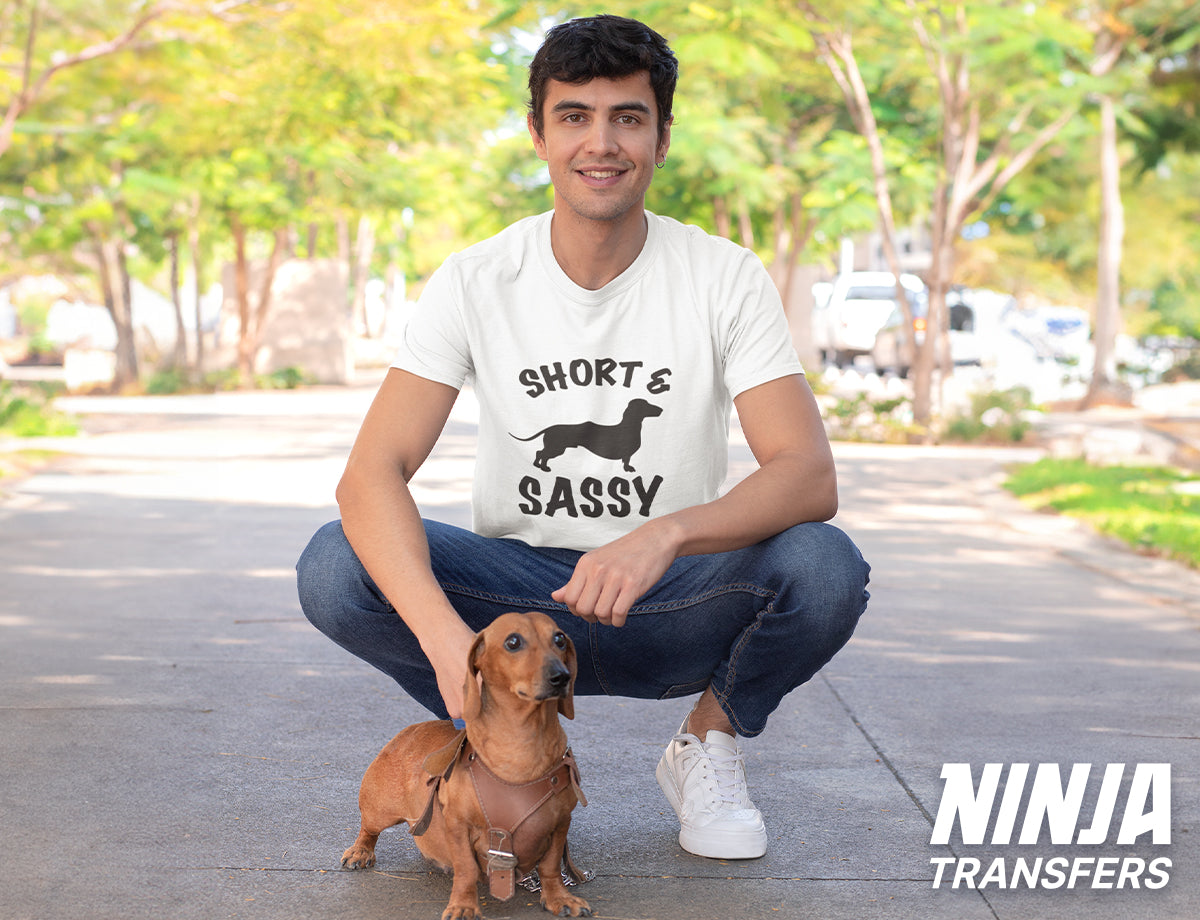
Craft Messages That Connect
Compelling t-shirts often carry messages that let wearers speak their truth. This could be inspirational phrases, witty jokes, political statements or personal mottos. Effectiveness lies in the message’s ability to resonate on a personal level as a form of self-expression.
For example, a t-shirt with an empowering quote can appeal to go-getters who value drive and growth. One with a sly math pun could delight academics. The key is aligning messages with your niche’s values, senses of humor, and interests.
When t-shirt messaging strikes that chord, the apparel becomes a powerful medium for wearers to express identity. Do the work to intimately understand what your audience would enthusiastically endorse or affectionately joke about. Then design t-shirts they’ll proudly put on each day.

Capture Attention With Eye-Catching Design
Vital for standing out in a crowded t-shirt market is an eye-catching design. This involves creating visual impact that “pops” off the shirt to instantly draw attention. Key elements include striking compositions, effective color and contrast, and unique or intriguing imagery.
For example, a design could cleverly play with optical illusions or bold, contrasting color blocks to make the wearer pop. Alternatively, putting familiar themes in an unexpected context creates intrigue.
The goal is to grab attention and invite closer inspection. An eye-catching t-shirt becomes a conversation starter, amplifying appeal. Put thought into what your niche would find visually arresting. Maybe that’s using a favorite color palette in a graphic style they adore. When t-shirt visuals speak directly to their aesthetic tastes, you create serious wow factor.
Ensure Visual Impact With High-Quality Graphics
Beyond compelling compositions, a design must visually delight under scrutiny. High-resolution imagery with clean lines and edges makes details pop with sharp polish. Vector-based graphics scale without losing integrity across shirts, hoodies, and more.
With on-demand printing, it’s tempting to underestimate how pixelation and distortion can creep in. But blur and jagged edges scream amateur hour. Minding graphic clarity at varied sizes shows customers a commitment to quality.
Crisp imagery also enables versatility across products as you expand beyond t-shirts into hats and other wares. As your product line grows, maintain razor-sharp visuals across fabric types. Holding your brand’s imagery to a high standard at every scale presents an elevated, premium impression that sells.
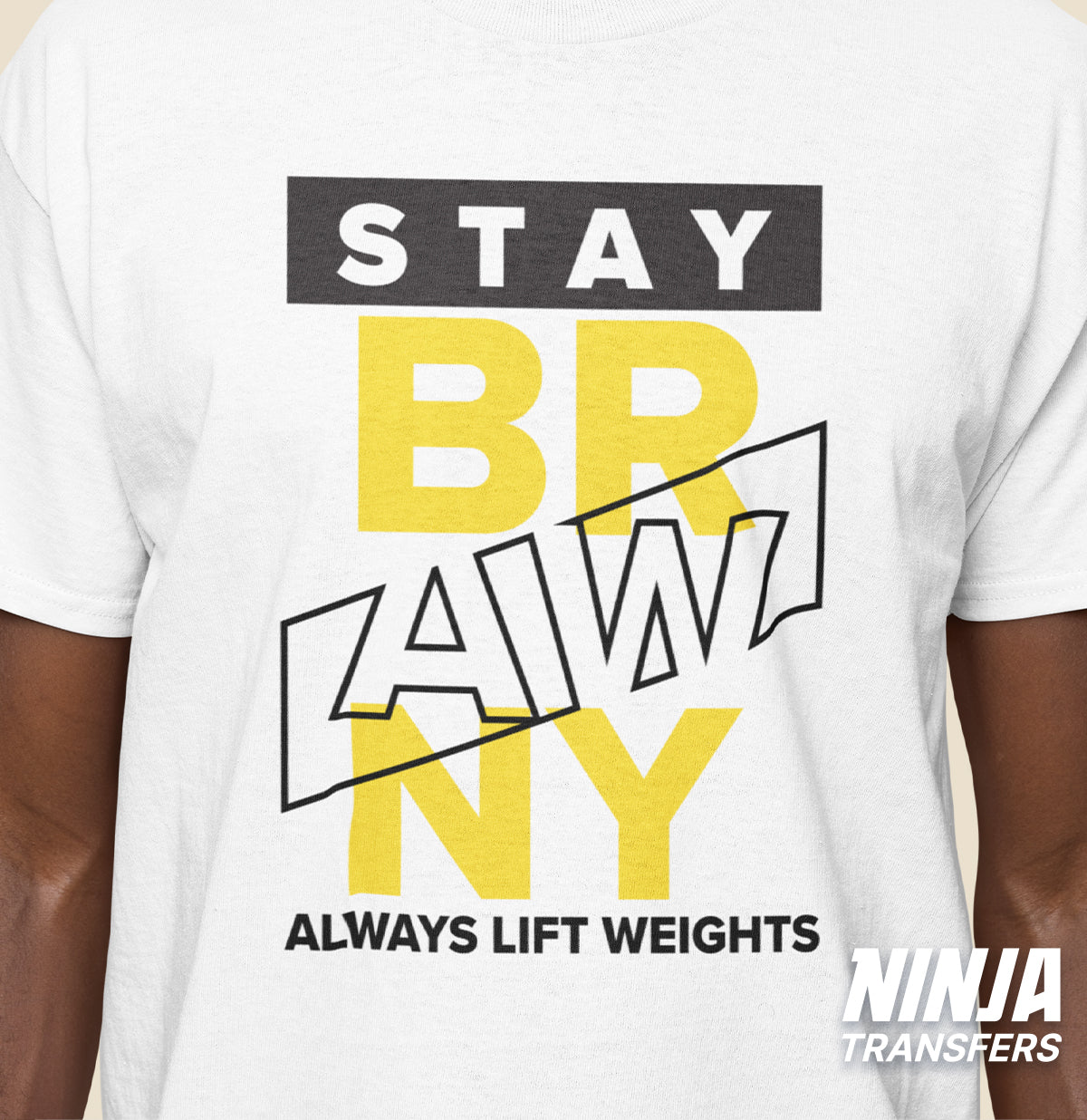
Use Color Theory
Colors influence mood and meaning so combinations require strategic attention, not just personal preference. Complementary hues (opposites on the color wheel) create bold contrast. Analogous tones (neighbors on the wheel) promote subtle harmony.
Vibrancy also directs feeling: bright primaries reflect youthful energy while muted secondary mixes offer sophistication. Strategic color use also spotlights graphic focus points. For example, a bright yellow sun draws attention amidst earthy greens and browns.
Consider both emotion and composition when selecting palettes tailored to your audience and messaging. Conscientious color use amplifies a design’s overall impact. Understand what shades your niche gravitates towards, from favorite sports team palettes to meaningful hues symbolic of their passions. When you speak their color language, designs captivate.

Use Typography Thoughtfully
Fonts carry symbolic weight, so choices should consider more than personal taste. The right typography selections can harmonize with visuals to boost meaning. Bold, large fonts project confidence while flowing scripts evoke whimsy.
Be judicious in font pairings. Limiting designs to one or two polished styles creates cohesion. Readability depends on strategic spacing, sizing and placement too. Central positioning spotlights slogans while subtle underscoring annotates graphics without overwhelming.
Rather than compete, images and text should complement. For example, modern angular typefaces integrate cleanly with geometric line art. When typography aesthetically aligns with graphical elements, designs resonate more memorably.

Know Your Print Methods
The production technique profoundly impacts visual appeal and durability—crucial for customer satisfaction. When assessing options, weigh creative needs and business goals.
Screen Printing nails high-contrast, simple graphics but lacks photographic nuance. It's most used for traditional bulk pre-printed tees. Read our article directly comparing DTF vs screen printing.
DTG (Direct-to-Garment) handles complex multi-color designs but can fade over time, working best on 100% cotton. This on-demand method is most common. Read our article directly comparing DTF vs DTG.
DTF (Direct-to-Film) fuses creative freedom with unrivaled sharpness across designs and premium longevity that sells. It's ideal for DIY print-on-demand models. If you're new to it, here's an introduction to DTF transfers.
We fully cover this topic in Chapter 3: T-shirt Printing Methods: Which is Best For Business?
Invest In Quality Materials
A t-shirt's fabric quality is critical for customer satisfaction driving sales and growth. Opting for low-cost 'budget' tees might pad margins but this strategy often backfires long-term. Issues like poor fit, scratchy fabric, and fading prints mean lower volumes, repeats, and more returns.
Alternatively, premium materials enhance ownership experiences. Quality tees feature better fit, ultra-soft fabric, and exceptional print durability over years of wear. Investing in superior shirts reflects well on your brand, encouraging referral traffic and repeat purchases that are invaluable for expansion.
View higher production costs as wise deposits into your business and community goodwill bank accounts. In adulthood, we learn that bargains often betray while genuine quality supports the long haul. Extend this same discernment to the fabrics adorning your designs.
For a more in-depth look at products, Chapter 7: Choosing The Right Products for Your T-shirt Business provides expert guidance.
Stand Out with Original Designs
Unique designs stand out, attracting niche audiences seeking distinctive connections. Original art and messaging provide memorable differentiation in a market flooded with copycats.
An imaginative illustration style or clever slogan becomes a talking point, enhancing owner experiences and driving repeats and referrals. Authentic originality also elevates brand perception by communicating craftsmanship and exclusivity.
Rising above generic clip art requires tapping your creativity or strategically investing in skilled designers. The effort pays dividends through improved market positioning and customer loyalty driven by highly shareable designs.

Elevate Your Brand With Logo Placement
Branding your t-shirt designs with your logo is a powerful way to establish and enhance your brand's presence in the market. How you incorporate your logo can vary greatly, depending on the brand image you wish to cultivate and the message you want to convey to your audience.
- Subtle Branding: A minimalistic approach, such as a small, one-color logo on the back collar or sleeve, can be effective. This method is unobtrusive yet ensures brand visibility. It's suitable for brands that prioritize the design or message of the t-shirt while maintaining a brand presence.
- Bold Branding: For brands aiming to make a strong statement, placing a prominent logo as the central design on the front can be impactful. This approach works well for established brands with a loyal customer base or brands whose logo is a significant design element.
- Integrated Branding: A balanced approach involves integrating the logo into the larger design of the t-shirt. This can be done creatively, ensuring the logo complements the overall design. It's a versatile method that suits brands looking for a middle ground between subtlety and boldness.
The decision to include a logo—and its placement—should align with the type of brand you are building. While not every shirt needs a logo, strategically using one can boost brand recognition, exposure, and perceived quality.
Separately printing logos increases production costs but pays dividends through bolstered brand awareness and professional reputation. This visibility investment demonstrates commitment to quality and memorable experiences.
[image: Showing a t-shirt company logo on sleeve placement or upper back]
Consider using our custom patches to make adding your logo a breeze and lower the cost.
Designing for Your Target Market
Designing t-shirts tailored to your target demographic's aesthetics elevates perceived value and relevance. Matching styles to audience visual expectations is key. For example, music tees feature high-contrast band logos and edgy, abstract art. Humor shirts grab attention with eye-catching cartoons or minimalist punchlines.
Pop culture designs mash-up iconic brands and characters with vibrant, highly detailed art. Outdoor shirts utilize earth tones and nature scenes with messages about conservation. Fitness apparel engages with kinetic typography and colors alongside figures evoking movement and motivation.
Researching niche visual sensibilities takes some legwork but pays off with designs that feel like intuitive extensions of your customers. Make apparel that not only speaks their language but also celebrates and advances it.
In Chapter 4, we cover the topic of choosing a niche for your t-shirt business.
Navigating Copyright Issues
Many commercially popular t-shirt themes feature copyright-protected characters, logos, and artworks owned by brands, franchises, and artists. Using these images without permission raises legal risks that designers should navigate carefully.
Parody Provides Some Flexibility
Parody does offer more creative flexibility to satirize or comment on existing intellectual properties. Strategies like combining elements from multiple brands or characters for humor and altering logos to parody the company or industry are common approaches.
However, humorous mashups still require thoughtful execution. While substantially altering a protected image may shield against some copyright claims, risks remain. Overly derivative work can still create customer confusion or falsely imply endorsement from the original IP owner.
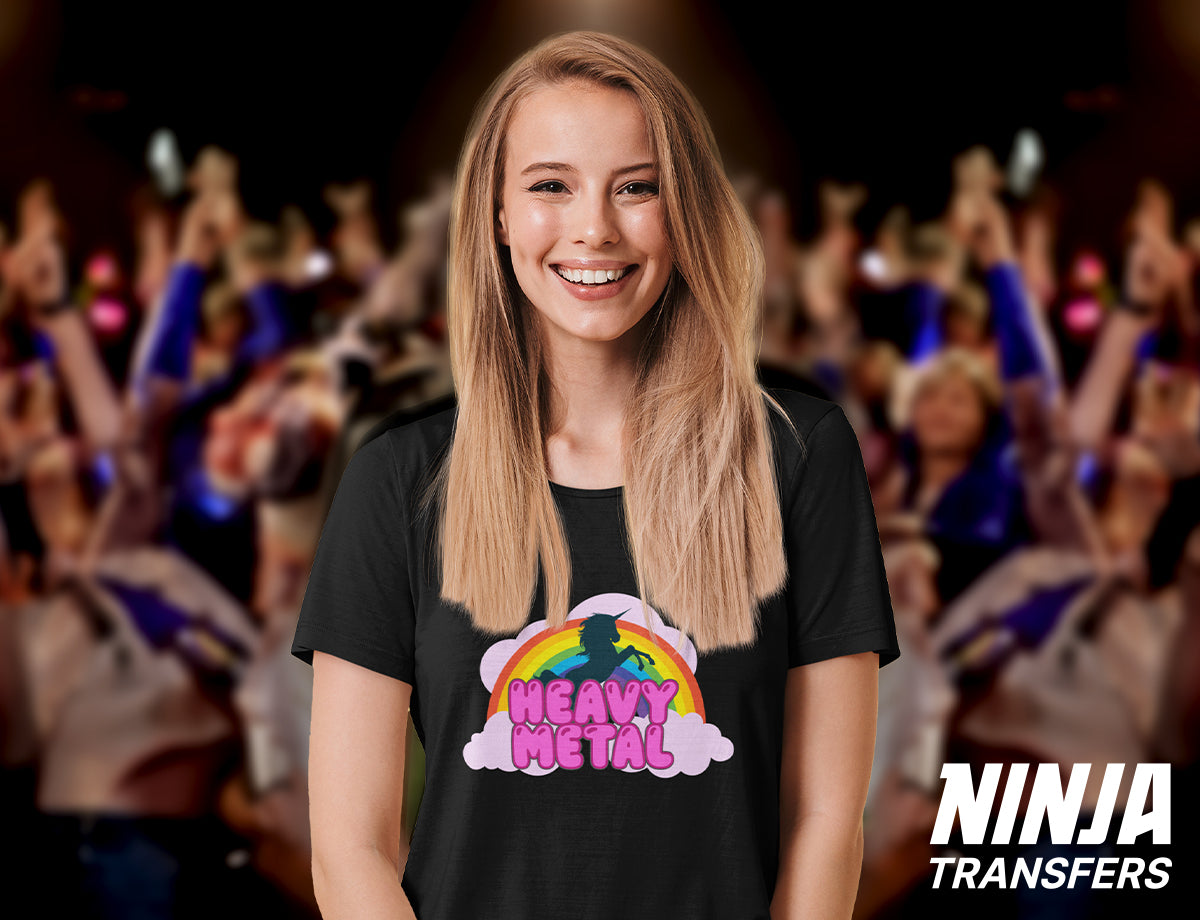
Originality Circumvents Issues
The ideal approach is embracing fully original concepts, illustrations and typography. Wholly unique creations circumvent legal landmines while distinguishing your brand in a crowded apparel market flooded with repetitions of the familiar.
Originality aligns incentives by conferring both financial upside and creative freedom.
Common Mistakes in T-Shirt Design
Designing t-shirts is an art that requires a balance of creativity and practicality. While there's room for experimentation, certain common pitfalls can detract from the appeal of your t-shirts. This section highlights critical mistakes to avoid, ensuring your designs remain impactful and desirable.
- Sized Wrong: An oversized design can overwhelm the shirt, while too small a design may get lost. Aim for a balanced size that complements the shirt's dimensions.
- Too Complex: Overly intricate designs can be confusing and lose impact. Simplicity often leads to stronger, more memorable t-shirts.
- Too Many Colors: Limiting your palette to three colors or fewer helps maintain visual harmony and makes it easier for customers to coordinate with their wardrobe.
- Looks Dated: Avoid outdated fonts or styles. Keeping up with current design trends helps ensure your t-shirts feel fresh and relevant.
- Message Too Overt: Subtlety can be powerful. Not every customer prefers bold statements or logos, so consider more understated messaging options.
- Generic Design: Strive for uniqueness. Designs that look like everything else on the market need help to stand out and capture interest.
- Bad Shirt Color Combos: Ensure the design colors complement the shirt color. Poor color combinations can ruin even the best designs.
- Too Many Options: Offering a limited selection of well-thought-out designs and products can be more effective than overwhelming customers with too many choices.
Bonus T-Shirt Design Tips
Beyond the basic principles of design, there are several strategies you can employ to enhance the creativity and marketability of your t-shirt designs. This section offers additional tips to refine your design process and improve the overall appeal of your t-shirts.
- Hire a Designer: Bringing in outside talent through platforms like 99designs or Fiverr allows you to benefit from fresh perspectives and specialized visual skills to take your t-shirt ideas to the next level.
- Subscribe to Clip Art Platforms: Maintaining access to a wide range visual assets like fonts, templates photos, and graphics through clip art subscriptions can be invaluable. These resources help accelerate design work rather than starting from total scratch.
- Use New AI Tools: Leverage generative AI tools like DALL-E, Midjourney, and ChatGPT to effortlessly ideate compelling concepts, prototypes, and complete designs filtered to your niche's visual sensibilities.
- Test Your Designs: Printing designs onto real shirts allows you to evaluate proportions, color matching, and overall look. Direct experience highlights any adjustments needed before final production.
- Gauge Public Interest: Actively gather audience feedback through surveys, social media polls, and A/B testing campaigns to measure potential popularity and fine tune appealing elements.
- Research Competitors: Regularly analyzing designs and offerings from leading shops in your niche provides valuable insights into customer preferences and inspiration for improving your own work.
- Collect Inspiration: Maintaining an evolving mood board folder filled with visually delightful designs boosts personal creativity by surrounding you with art that intrigues the niche visual appetite.

Crafting Success in T-Shirt Design
We've covered critical strategies for designing t-shirts that sell - from knowing your audience to flawless production, but no formula guarantees marketplace victory. Creativity and business savvy must dance together, unique to each entrepreneur's vision. View the principles here as flexible frameworks rather than rigid rules - tools providing stability to take creative risks rather than constraints hampering self-expression.
The path to success is often paved with challenges and learning experiences, so don't be discouraged by setbacks. Instead, view them as opportunities to grow and refine your craft. Your commitment to excellence and innovation is the key to standing out in the competitive t-shirt market. Keep pushing boundaries, stay inspired, and watch your t-shirt business flourish.
Continue on to Chapter 7: Choosing The Right Products for Your T-shirt Business, where we'll dive deeper into selecting the best materials and products to complement your stunning designs.

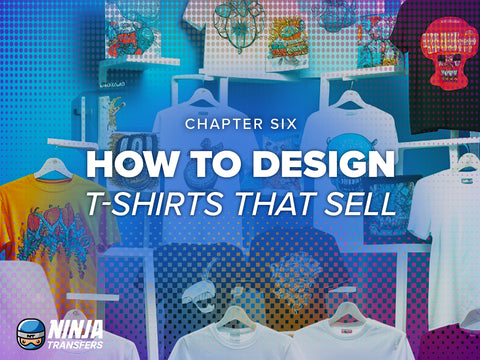
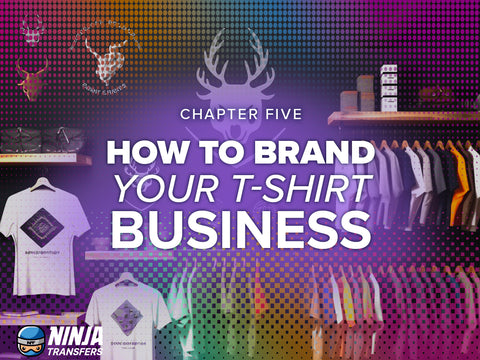
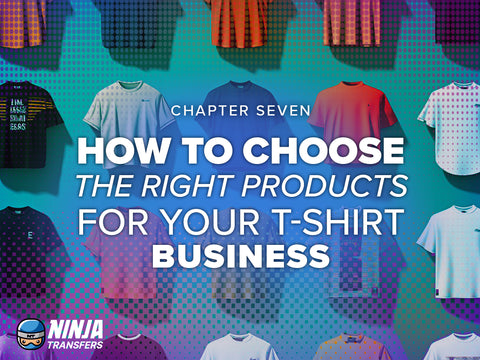
评论 (0)
这篇文章没有评论。成为第一个在此留言的人!